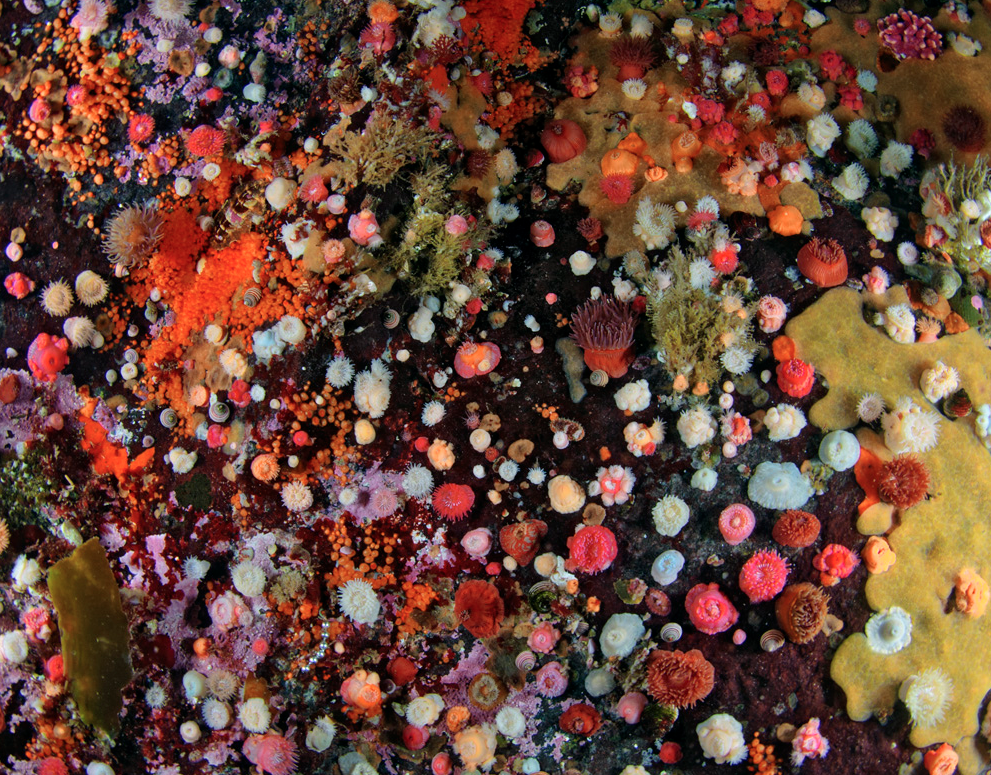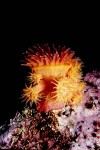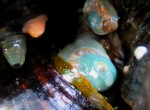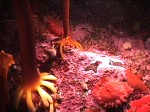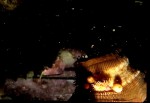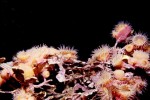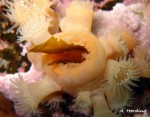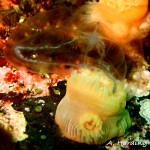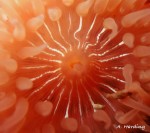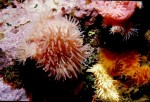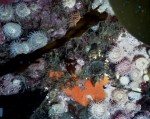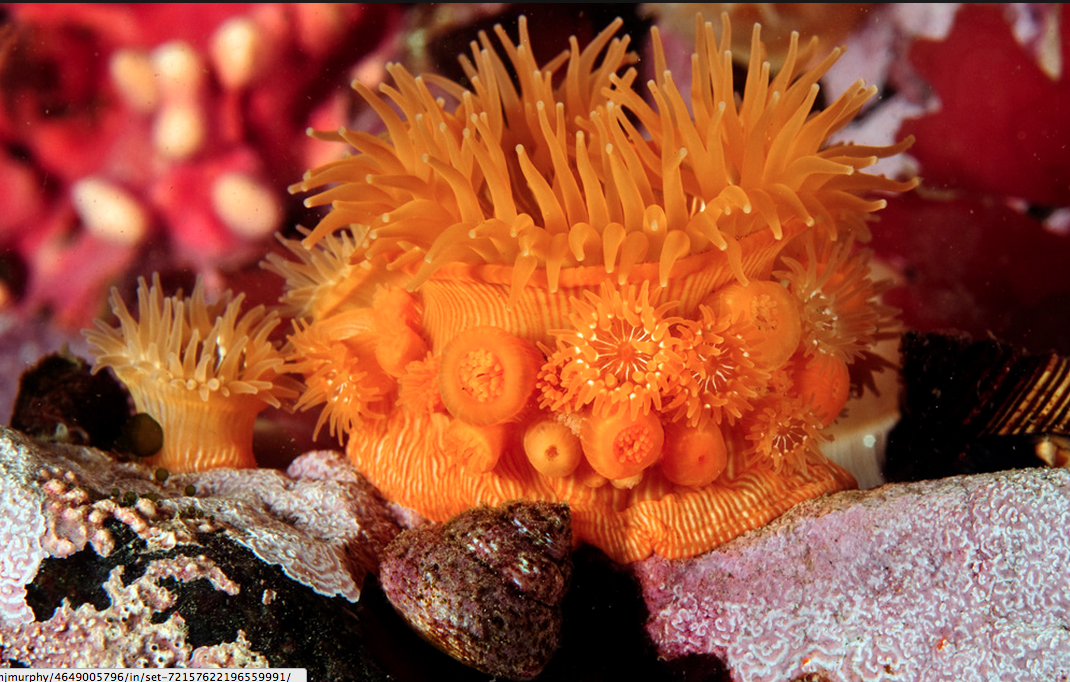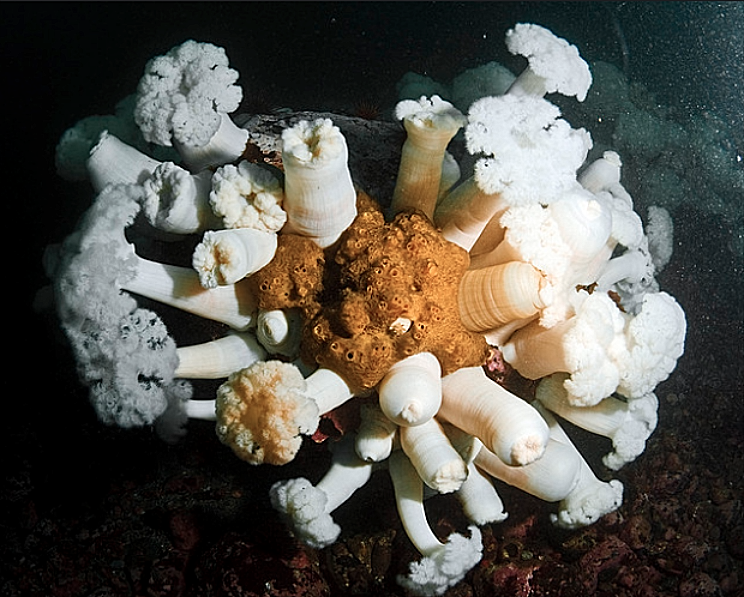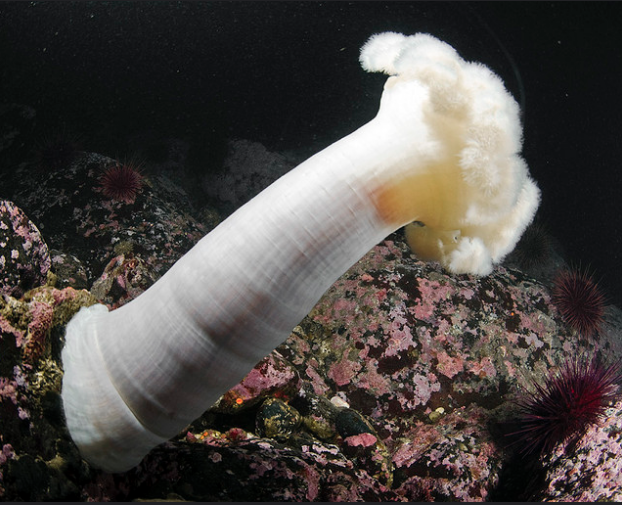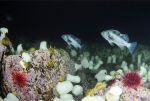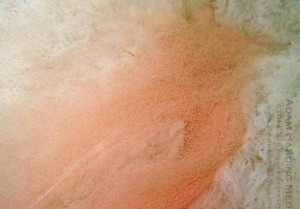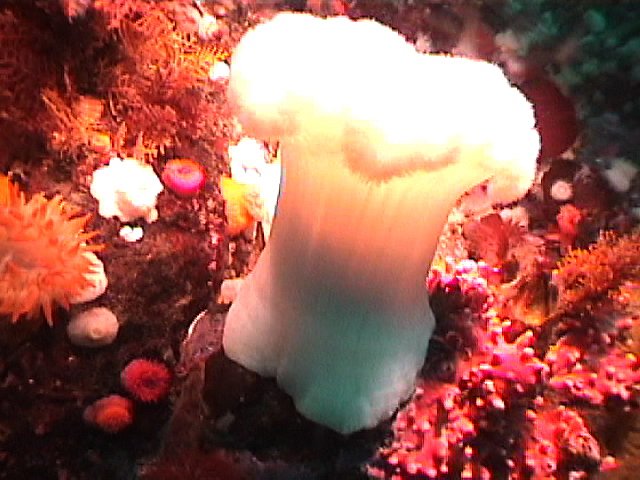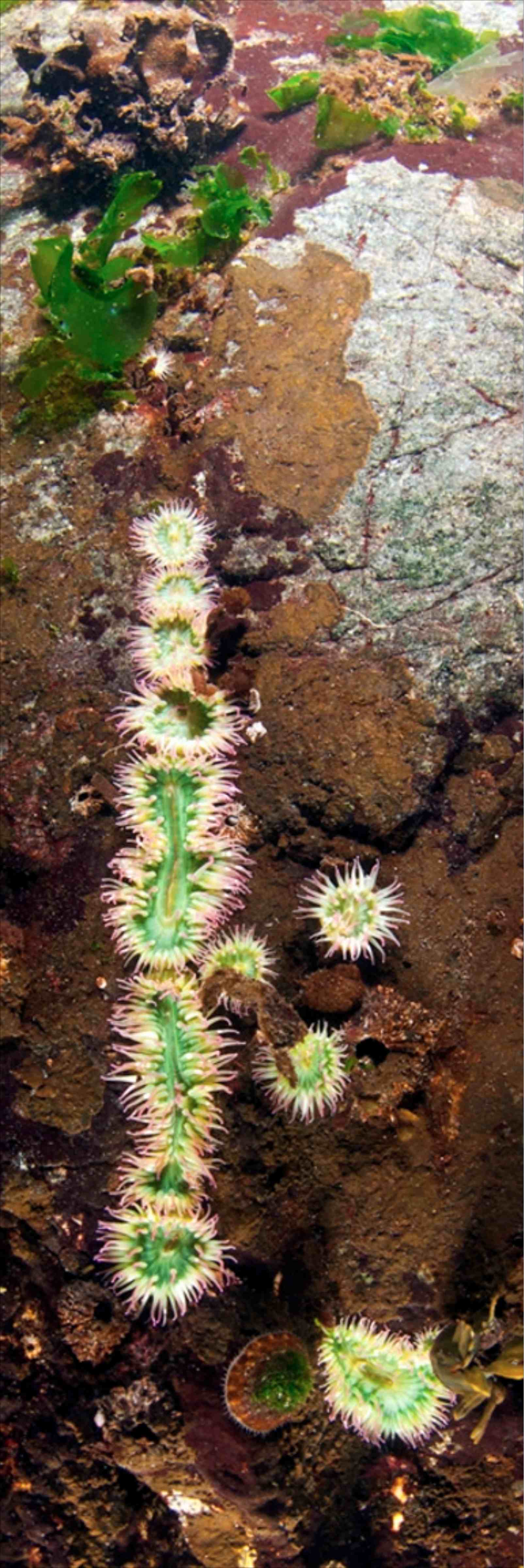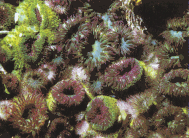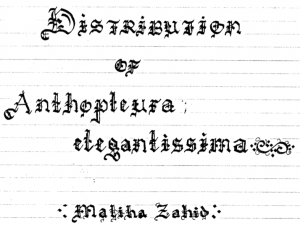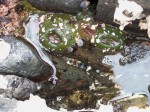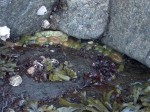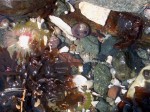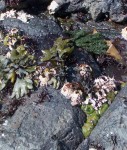Brooding anemones or Epiactis prolifera are a small species: the height of an expanded specimen does not often exceed about 3cm. The basic colour is brown to greenish brown, but it is sometimes red, pinkish red or dull green. They are usually found in the subtidal zone (zero tidal zone), especially on intertidal rock benches or surge channels, and in rocky areas with wave action, often in areas with crustose coralline algae. Brooding anemones are also regularly found on the leaves of eelgrass. Red or pinkish red specimens are sometimes found on rocky shores, but rare on eelgrass. They are rarely exposed to the air, not being able to tolerate exposure to the air and sun. Brooding anemones, like other sea anemones, attach themselves to something solid so as not to get carried off by currents or wave action.
- Brooding anemone showing young clinging to centre belt area- photo by G. Fletcher
- Photo by Johan Ashuvud , 1979
- A contracted intertidal Epiactis prolifera living in the mussel beds on the West Islet of Great Race Rocks. G.Fletcher Photos
- Brooding anemone on encrusting algae near the holdfas of kelp
- Plankton feeding Epiactis, photo by Johan Ashuvud
- Coraline algae substrate- photo by Johan Ashuvud.
- Algae being snagged by the tentacles of the anemone- photo by
- These two images were taken by Adam Harding in the summer of 2010. This one shows predation on a jellyfish.
- Adam’s artistic interpretation of an Epiactis prolifera.
- Epiactis with the white sea cucumber Eupentacta
- Photo of colony by Dr.Armand Svoboda
- Another of Dr. Svobodas pictures showing the wide range of colors of these anemone
The oral disk of brooding anemone is generally marked with radially arranged white lines. The pedal disk and column have similar lines, though they may not be as sharp. The numerous young regularly found on the pedal disk do not originate there by asexual budding, but are derived from eggs fertilized in the digestive cavity. The motile larvae, after swimming out of the mouth, migrate down to the disk and becomes installed there until they become little anemones ready to move and be able to feed themselves. You can see the belt of juvenile anemone in several of the images above.
| Domain | Eukarya |
| Kingdom | Animalia |
| Phylum | Cnidaria |
| Class | Anthozoa |
| Order | Actiniaria |
| Family | Actiniidae |
| Subclass | Zoantharia |
| Genus | Epiactis |
| Species | prolifera |
| Common Name: | Brooding Anemone |
Brooding anemones eat small fish and shrimps. Much of their prey is crustaceans. The brooding anemones capture its prey with its deadly stinging tentacles. Its mouth and tentacles are located on the top of its body. Their stalk and tentacles are bristling with an arsenal of stinging cells, or nematocysts. The double walled microscopic stinging cells contain a hollow thread with a minute harpoon-like barb at the end. When the cell is stimulated either physically or chemically, it explodes and fires the barb and attaches the thread with incredible force into the potential predator or prey and simultaneously injects a potent poison. Usually hundreds and thousands of these stinging cells are activated at once, which can paralyze prey or deter most predators.
After being immobilized, the prey which may include shrimps, crabs, jellyfish or small fish is manoeuvred by tentacles towards the mouth where it is consumed whole. Any indigestible material or waste will be excreted through the mouth as well. Even with its formidable arsenal of nematocysts, anemones are a favoured prey for other animals. Many nudibranchs feed on anemones and are not only immune to the anemones defenses, but have the ability to absorb un-detonated packets of stinging cells which are then used for the nudibranchs own defense. Sea stars and fish are also some regular predators. If a brooding anemone, like any other sea anemones, is torn apart, then each part becomes a new brooding anemone.
References:
Eugene N.Kozloff: Marine Invertebrates of the Pacific Northwest
Seashore Life of the Northern Pacific Coast
Megumi F.Strathmann: Reproduction and Development of Marine Invertebrates of the Northern Pacific Coast
Doug Pemberton: Divers Magazine February 2001
http://divermag.com/archives/feb2001/anemones-feb01.html
Sea Anemones: http://library.thinkquest.org/J001418/anemone.html
| This file is provided as part of a collaborative effort by the students, staff, faculty and volunteers of Lester B. Pearson College | February 2002 | Sangeeta Asre- Fiji Islands Year 28 |
